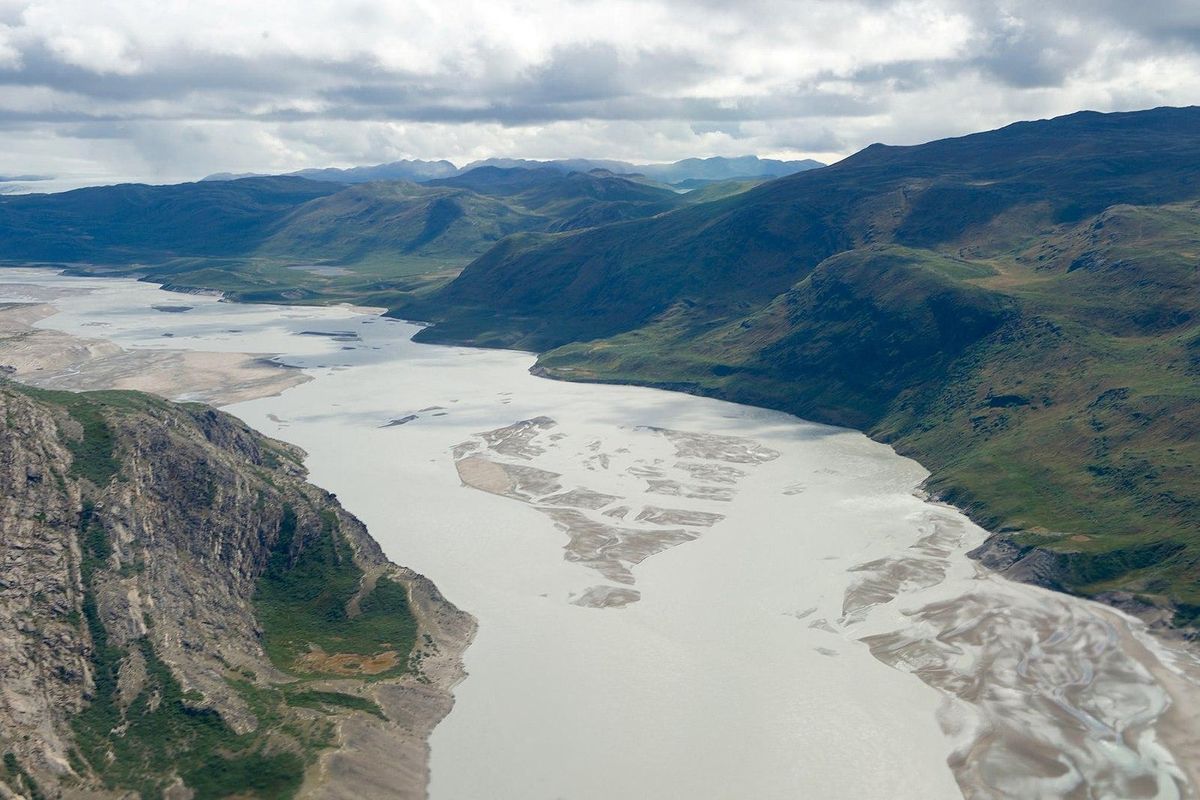Want to know what the North Pole is really like? We asked an Arctic researcher.

A sunny day at the Saarland Glacier near the North Pole.
When Richard Krishfield began his career fixing office equipment, he had no idea it would take him to the ends of the Earth.
Then, in 1986, Krishfield, who had spent years working on computers and electronics for businesses, was asked down to the Woods Hole Oceanographic Institute (WHOI) in Massachusetts to work on one of their instruments — a conductivity, temperature, and depth (or CTD) device that collects data from its seat on the ocean floor.
It wasn't the work Krishfield was used to, but it offered an intriguing promise of adventure.
"I thought well, jeez, it might be kind of fun to work on ships and travel the world for a few years," Krishfield says over the phone. 35 years later, he's still doing it.
For over 85 years, the WHOI has been at the forefront of oceanographic study and innovation. Their scientists, engineers, and innovators routinely travel around the globe — from oil spill sites to exotic coastal shores to underwater volcanoes — collecting valuable data and learning how our world works.
Krishfield's work with the WHOI has brought him to some of the world's most extreme places, including the North Pole.
Unlike the iconic images of a massive, globe-spanning, elf-employing, gift-making, reindeer-housing operation run by a jolly man in a red suit, the real North Pole is home to navigators and researchers who brave some of the coldest weather on the planet in the name of science.
Living and working at the North Pole is an intense experience that takes a physical toll on those who venture out there.
Every year, Krishfield and his team spend months at a time camping out in the Arctic, setting up advanced observation instruments that send real-time data back to the WHOI. "Basically they’re sending back what you might consider the weather of the ocean," says Krishfield. And setting them up is no easy task.
"You’re living in a tent on the ice," says Krishfield. "And you don't have things like forklifts, so you have to muscle heavy equipment on and off small airplanes." Those airplanes land on makeshift runways that are cleared out by workers, too. In order for the ice to be thick enough to land a plane on, most of the work has to happen when it's as cold as possible.
"You have to get acclimated to the minus-20 or minus-30 degree temperatures and dress appropriately and know what to do," Krishfield says.
Over his 35-year career, Krishfield has seen firsthand just how much the Arctic is changing.
"Obviously the ice is melting," he says. "And in the 30 years I’ve been going up there, it's very clear how much."
One of the instruments Krishfield has helped set up is a buoy that sits on ice floes and dangles sensors into the water below to measure temperature, salinity, and current velocity of the ocean. When he first started installing them, he and his team would look for ice floes that were up to 4 meters thick.
"Then after a couple years we were looking for 2- to 3-meter floes," says Krishfield. "Then we were looking for 1-and-ahalf to 1-meter floes, and then this last summer, we were out there, and there was hardly any thick ice at all."

Photo taken from a plane over the Jacobshavn Glacier Front in Ilulissat, Greenland
Image via U.S. Department of State/Wikimedia Commons.
Of course, Krishfield and the scientific community have been reporting shrinking ice in the Arctic for a long time. Studies confirmed long ago that the Arctic is warming, that the ice is melting, and just how catastrophic the result of that could be for the Earth's climate and ecosystems.
If the Arctic becomes a seasonal ice cap (where ice melts during the summer and refreezes during the winter), it could throw the planet's weather systems into utter chaos. Scientists estimate that could be the case by 2050.
"Probably sooner than that," says Krishfield.
You don't need to look at satellite data to see how much the Arctic has changed, Krishfield says.
"I look back and think of all the trips we used to do back in the summertime ... it was really beautiful out there," he recalls. "It’d be bright and sunny, and it was just beautiful."
"Now that the ice has melted away quite a bit, what you end up having is very grey, dull, dreary, and sort of foggy days out there. So the whole climate of it has changed."
It's hard to imagine that human beings could have any effect on the North Pole — as far away from it as we are — but we can and we do.
Arctic sea ice loss has been directly linked to carbon emissions, and saving the Arctic is a matter of cutting down those emissions quickly and dramatically. The North Pole is so extreme and so far away that we hardly ever think about it — let alone wrestle with the true global impact of what would happen if we let it melt. Odds are, the North Pole only comes up in conversation around Christmas — and not exactly in a "lets save the Arctic ice cap" context.
If you find hope in one thing though, consider the fact that human beings really can have an impact on the Arctic, for worse — or for better. Our actions have brought the Arctic Ocean to the brink, but it's the actions we take next, along with the hard work of scientists and researchers like Krishfield, that save it.

